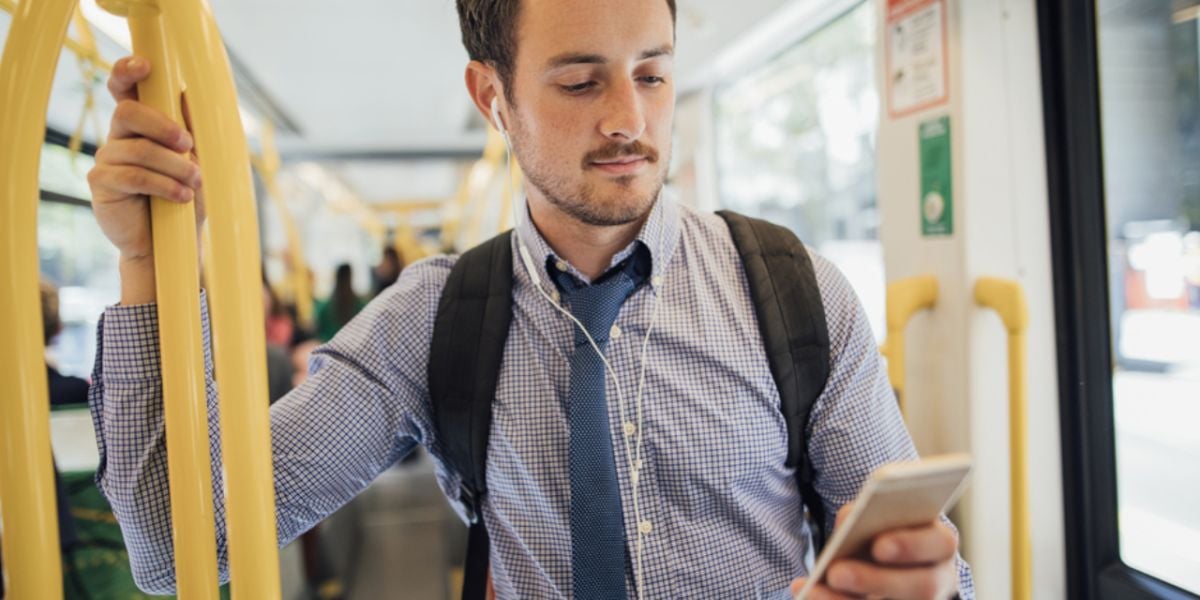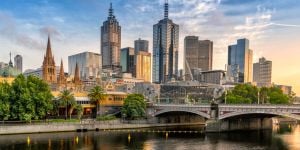
Melbourne provides a range of different options for getting around, whether you're heading into the city each day for work or trying to find the shortest route to the pub. With one of the largest public transport systems in the country, there are buses, trams and trains to get you from A to B. However, Melbourne's growing population has led to urban sprawl and new housing developments in the outer suburbs, resulting in an increased reliance on cars for transportation. Crowned Australia's most congested city, you're not imagining that Melbourne's peak-hour drive is taking longer and longer!
Public transport in Melbourne
Public transport in Melbourne includes buses, trains, and trams. The Public Transport Victoria website provides all the necessary information for planning your journey, including any disruptions or service changes that may impact your commute. To travel on Melbourne's public transport system, you'll need a Myki card, which is a hard card that you can buy and top up with money at train stations, online and at hundreds of shops. A full fare Myki card costs AUD 6 (USD 4) and a concession, child or seniors Myki card costs AUD 3 (USD 2). Your Myki card can be used across all modes of transport, and your fare is determined by your ticket type and the zones you are travelling through. Fares are capped across the network, so regardless of where you travel, you won't be charged extra once you meet the cap. Concession fares and free travel also apply across the network, and if you're in Melbourne to study, you can apply for an International Student Travel Pass myki card, which can save you up to 50% on travel.
Melbourne's Metropolitan Zones for public transport are the free tram zone, Zone 1, Zone 2, and the boundary overlap between Zones 1 and 2.
Metropolitan zones:
- Free Tram Zone;
- Zone One;
- Zone Two;
- Zone One/Two Boundary Overlap.
Trains
The train system in Melbourne is operated by Metro Trains Melbourne and covers the city, the metropolitan area and the outer suburbs of Melbourne. Melbourne's train system comprises 998 kilometers of track, with Metro Trains delivering commuters to 222 train stations along 16 metropolitan lines. Trains are a popular mode of transport for people traveling into the city for work each day. Trains from the suburbs connect with Flinders Street station via the CBD stations in the underground City Loop. Trains run from 5 am until midnight, and then night trains run every hour on the majority of lines. Though trains can be jam-packed during rush hour, you are usually able to squeeze on without too much trouble. A great tip to avoid peak hour is to ask your boss if you can adjust your work hours to be slightly outside of the traditional nine-to-five schedule. This will help to avoid the crowds.
Metro trains:
- 222 stations;
- 16 metropolitan lines;
- 998 kilometers of track.
Buses
Buses operate throughout Melbourne and cover a wider area than trams and trains. They are handy for reaching areas not served by other forms of public transport, including outer suburbs and regional areas, although they can be slow and are impacted by traffic. Melbourne's buses stop at shopping centers, sports venues, hospitals and schools, and often intersect with train and tram lines as well. Approximately 400 regular bus routes service metropolitan Melbourne, and night buses are also available, allowing you to enjoy Melbourne's nightlife with the peace of mind that you can get home safely.
Trams
Melbourne's trams are iconic, and the city has the largest tram network in the world. In addition to being a tourist attraction, trams offer a convenient way to travel within the city center. The burgundy and gold City Circle tram is free, and it will take you to Melbourne's sights and attractions, accompanied by audio commentary along the way. And there's also a free tram zone within the city center. If you live in the inner suburbs of Melbourne, trams are often the preferred mode of transport into the CBD.
Cycling in Melbourne
An increasingly popular way to get to work in Melbourne is to ride your bike. There are no traffic jams, it's inexpensive, and it's great for your body and mind. Melbourne has an extensive network of bike lanes and paths, with cycling lanes along major roads, including Royal Parade, St Kilda Road, Rathdowne Street and the CBD. You can find e-bikes for hire around Melbourne and the inner suburbs, but e-scooters have been banned from the CBD due to safety concerns. You can still find an e-scooter to hire in inner-city suburbs, so check out Lime and Neuron if you want to learn more.
Taxis, Uber, and carpooling in Melbourne
Taxis and ride-sharing services like Uber are widely available in Melbourne. You can easily book a ride through smartphone apps or find taxis at designated ranks throughout the city. Ride-sharing services offer a convenient and often cost-effective option for getting around, and classics like Uber are not the only offerings on the market. There are nearly 600 car share spaces in Melbourne, and companies like GoGet and Flexicar allow you to book a vehicle online for as long as you need it. The flexibility of having a car when you need it, without all the ownership costs!
Carpooling is yet to really take hold in Melbourne. There are a couple of websites, such as Carpool in Australia, where you can enter your destination and indicate whether you need a lift or are driving, and you can see what results come back in your search. However, this is not a popular way yet for people in Melbourne to commute to work.
Owning your own car in Melbourne
Aussies have always loved their cars — Australia is a vast and expansive land to get around. However, population growth and low public transport accessibility in outer Melbourne areas have resulted in increased car ownership and congestion on the roads, especially for the daily commute into the CBD for work. Owning a vehicle in Melbourne is common, but the benefit of owning your own car depends on where you live and your lifestyle. If you live in an area with limited public transportation options, owning a car offers flexibility and convenience, particularly for families or individuals who require regular access to transportation. Moreover, if your work involves travel that can't be easily accomplished using public transport, then it might make sense to have a vehicle.
As with owning a car anywhere, owning a car in Melbourne comes with expenses such as purchasing, insurance, registration, parking, fuel, and maintenance. Inner-city parking can also be limited and expensive, and the number of on-street parking spots in the CBD has been significantly reduced in recent years. Some people choose to forego car ownership due to the associated expenses and rely solely on public transport or other alternative transportation options.
Walking around Melbourne
Another option for getting around Melbourne is walking. On the whole, Melbourne is a walkable city, particularly the CBD, with its grid layout and easy navigation. The city center typically features good pavements and a variety of attractions, landmarks, shopping and dining options, all within walking distance of one another.
We do our best to provide accurate and up to date information. However, if you have noticed any inaccuracies in this article, please let us know in the comments section below.








